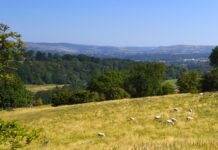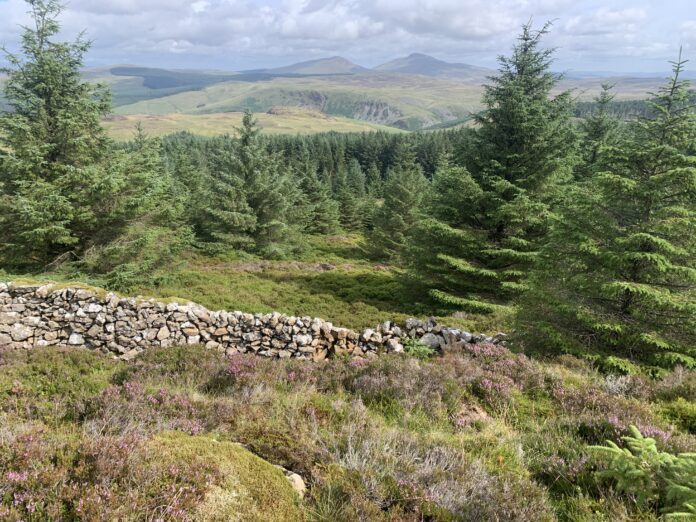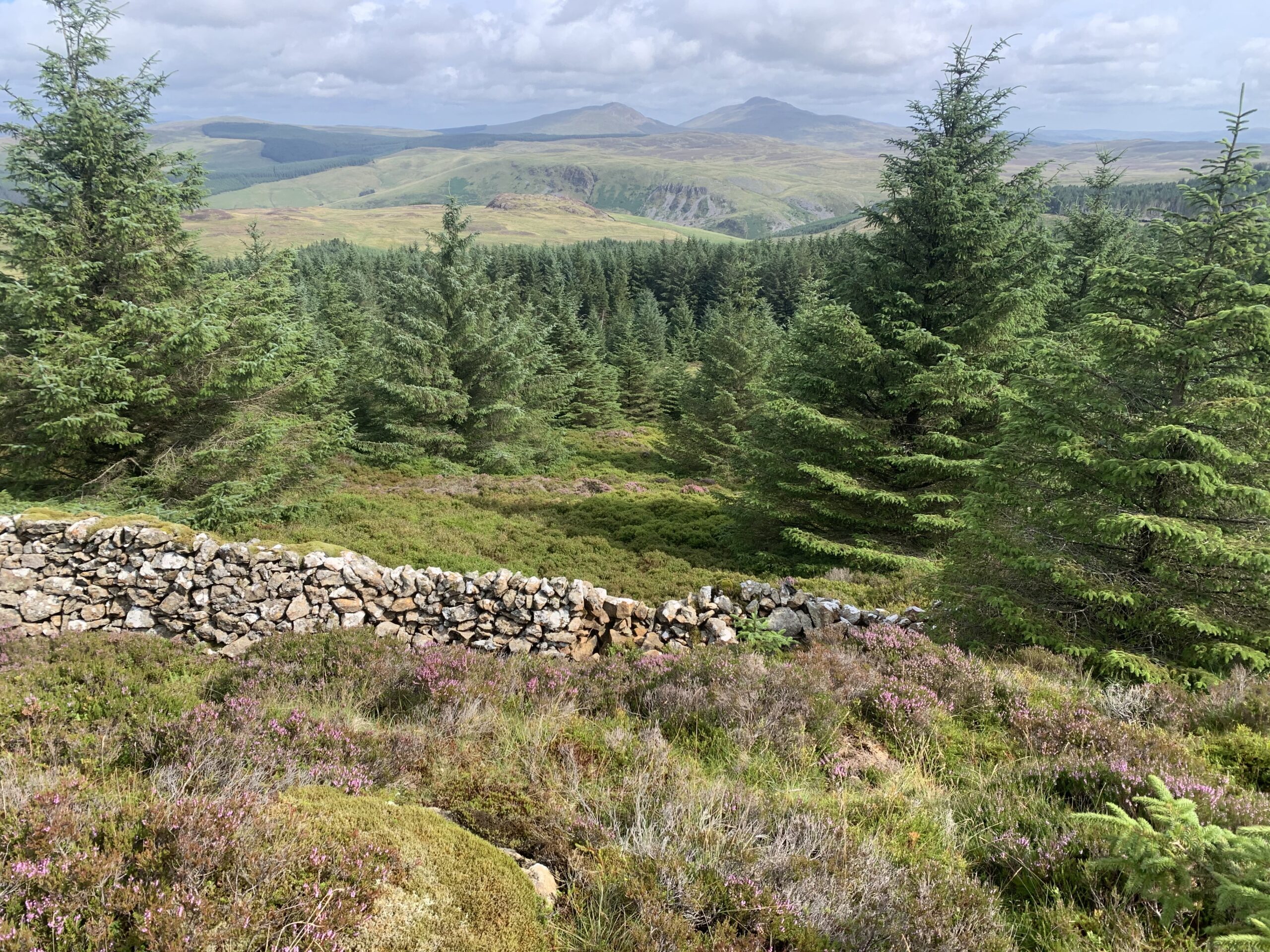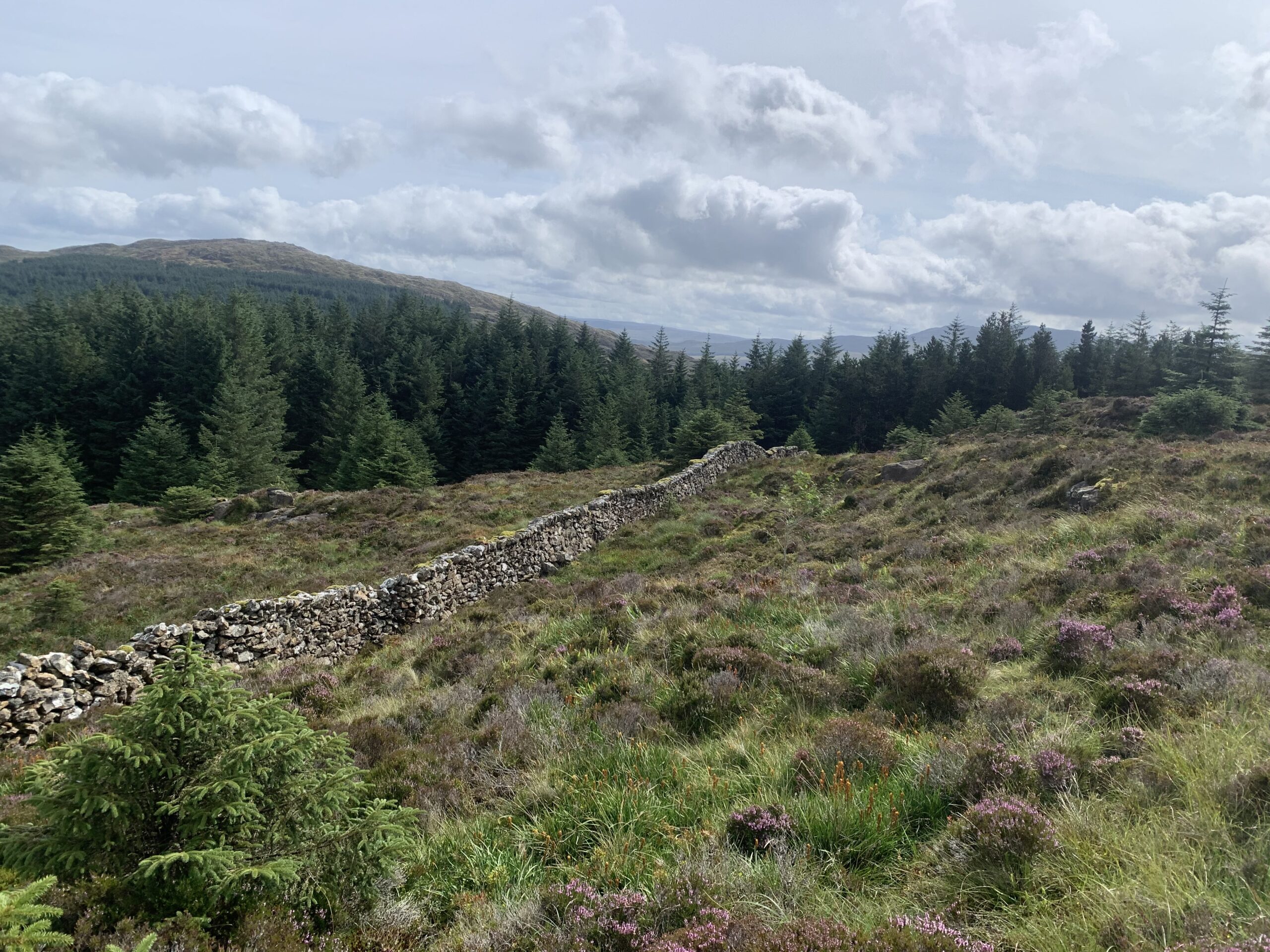- Welsh Government’s tree planting plans are equivalent to planting 5,000ha per yea
- Rural livelihoods threatened by large investment firms buying farmland
- Trees not the only solution to climate change – farmland can store vast amounts of carbon in soils, wetlands, hedgerows and peatland
- Evidence shows degraded UK peatlands emit more carbon than what even the most ambitious UK Climate Change Committee tree planting targets could capture and store
The Nature Friendly Farming Network (NFFN) are today urging careful implementation of Government plans for woodland expansion or threaten long-term biodiversity, farming businesses and wildlife across Wales.
Lee Waters MS, Deputy Minister for Climate Change, outlined in July a target of 43,000ha of woodland to be planted by 2030 and 180,000ha by 2050 – equivalent to planting 5,000ha per year. In the past year alone, only 290ha were planted with annual woodland creation not exceeding 2,000ha since 1975.
NFFN fears this ambitious tree planting target could drive a blanket tree planting approach – and evidence is showing this is already the case. Around a dozen farms have been sold recently in mid-Wales by companies and private investors outside Wales.
Historically, commercial plantations, usually dominated by the non-native Sitka spruce and often of limited biodiversity value, were planted on thousands of hectares as single-species forests. This was oft done on valuable upland wildlife habitats, and would have contributed towards losing 44% of Welsh upland healthland between 1940-1980.
NFFN, a farmer-led organisation, helps farmers provide nature-based solutions to tackle the climate and biodiversity crises, while supporting communities and local economies to produce sustainable food and make space for nature.
With the Welsh Government expecting to launch its Sustainable Farming Scheme, farming in Wales is at a crossroads. The NFFN are supportive of the Government’s high-level of ambition surrounding future farming policies but urge a lack of clarity on current agri-environmental contracts and the level of support available before the launch of the Sustainable Farming Scheme.
There is growing concern that farmers’ uncertainty is bait for large investment firms to buy Welsh farmland for mass tree planting. The NFFN encourages the Government to urgently outline its land-use framework and the direction of travel for farming.
Without genuine nature-based solutions being actively encouraged and incentivised across Welsh farmland, poorly planned afforestation will increase, threatening farmers livelihoods and rural communities, and reducing opportunities for new entrants.
The NFFN recognises the need for more Welsh grown and sourced timber to meet growing demand, but without adequate consideration, tree planting in the wrong place could contradict the Government’s commitment to reversing the decline in biodiversity in its Nature Recovery Action Plan.
Hywel Morgan, livestock farmer in Carmarthenshire, commented: “We need more trees in our landscape. However, allowing large-scale planting on biodiversity-rich land and where wildlife already thrives isn’t good for communities or the planet. Curlews and other ground-nesting birds are in danger of losing their habitat on land next to me due to tree planting being done on other side of the fence.”
Rhys Evans, NFFN’s Sustainable Farming Lead for Wales, says: “Trees are important in our fight to tacke the nature and climate crises, but they’re only part of the solution. Equal consideration should be given to other carbon-rich agricultural habitats such as hedgerows, heathlands, peatlands, species-rich grasslands, hay meadows and multispecies leys. When it comes to tree planting, we must plant the right tree in the right place. If we get it wrong, Wales risks becoming the “Forest of Western England” as coined by Islwyn Ffowc Elis in his novel ‘Wythnos yng Nghymru Fydd’
Current tree planting targets require a sensitive roll-out with long-term consideration given to the land’s existing capacity for nature restoration and carbon storage, including the role of farmers in managing landscapes for nature and food production. Woodland grants for farmers should support the management of existing woodland resources and new tree planting.
The NFFN encourages farmers to create woodier landscapes within farm landscapes with native trees that don’t damage habitat or soils – where the carbon and nature benefits are already in farmer’s hands.
New woodland in appropriate locations can benefit farm businesses by providing an alternative tree crop in the form of fruit, nuts or timber, and provide shade, shelter and fodder for livestock.
Woodland can also deliver environmental goods by preventing soil erosion, improving water management and providing habitat for pollinators and beneficial insects. Such systems should be rewarded by future farming schemes and farmers should be supported to implement these.
Tony Davies, a fifth-generation tenant farmer on a mountain farm in Elan Valley, says: Farmers can help tackle climate change by extending existing woodlands, planting trees on steep land and awkward corners of fields, or by implementing silvopasture and agroforestry systems. We have hay meadows, healthland and peatland on our farm which provides a home for lots of birds, mammals and pollinators. Large scale tree planting would threaten all of this.’
Help keep news FREE for our readers
Supporting your local community newspaper/online news outlet is crucial now more than ever. If you believe in independent journalism, then consider making a valuable contribution by making a one-time or monthly donation. We operate in rural areas where providing unbiased news can be challenging. Read More About Supporting The West Wales Chronicle



























